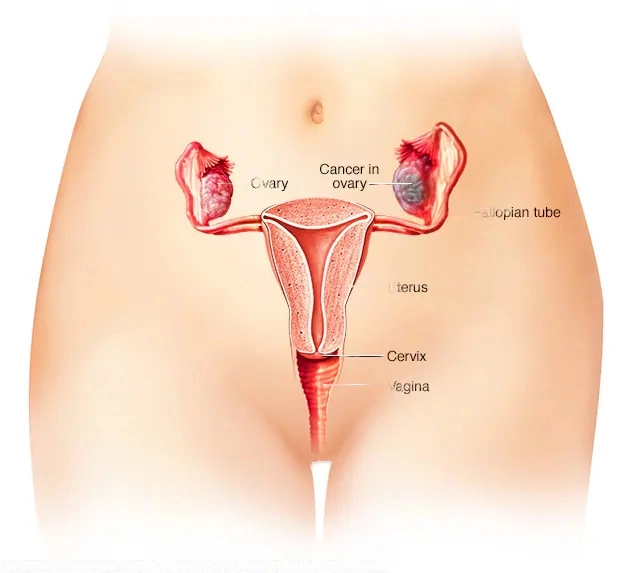Ovarian Cancer Screening
Ovarian Cancer
Advanced Ovarian Cancer Surgery
There are over 36,000 new cases of ovarian cancer annually in the United States, and approximately 24,000 women will die of their disease, making this the most lethal of gynecologic cancers. This accounts for 3.43% of all cancer deaths nationally.
Malignancy that arises from the epithelium (90–95%), sex cord-stroma, or germ cells of the ovary as well as tumors metastatic to the ovary. Histologic types include the following:
Epithelial
- High grade serous (most common, 70–80%)
- Low grade serous
- Mucinous
- Endometrioid
- Clear cell
- Malignant Brenner tumor (transitional cell epithelium)
- Carcinosarcoma (malignant mixed müllerian tumor)
Sex cord-stromal
- Granulosa cell tumor
- Sertoli–Leydig cell tumors
- Lipid (steroid) cell tumor
- Fibrosarcoma
Germ cell
- Teratoma (immature)
- Dysgerminoma
- Embryonal carcinoma
- Endodermal sinus tumor (yolk sac tumor)
- Choriocarcinoma
Metastatic disease from the following:
- GI tract (Krukenberg tumor)
- Breast
- Endometrium
- Lymphoma
For epithelial malignancies, staging and tumor excision/debulking includes the following:
- Cytologic evaluation of peritoneal fluid (pelvic washings)
- Bilateral salpingo-oophorectomy with total hysterectomy and tumor reductive surgery
- Excision of omentum
- Inspection and palpation of peritoneal surfaces
- Cytologic smear of right hemidiaphragmatic surface
- Biopsy of adhesions or any suspicious areas
- Biopsies of paracolic recesses, pelvic sidewalls, posterior cul-de-sac, and bladder peritoneum
- Bilateral pelvic and paraaortic lymph node biopsies
- Appendectomy for mucinous tumors or if appendix appears abnormal
Goal of surgery is complete cytoreduction leaving no residual disease as that leads to maximal advantage of survival.

